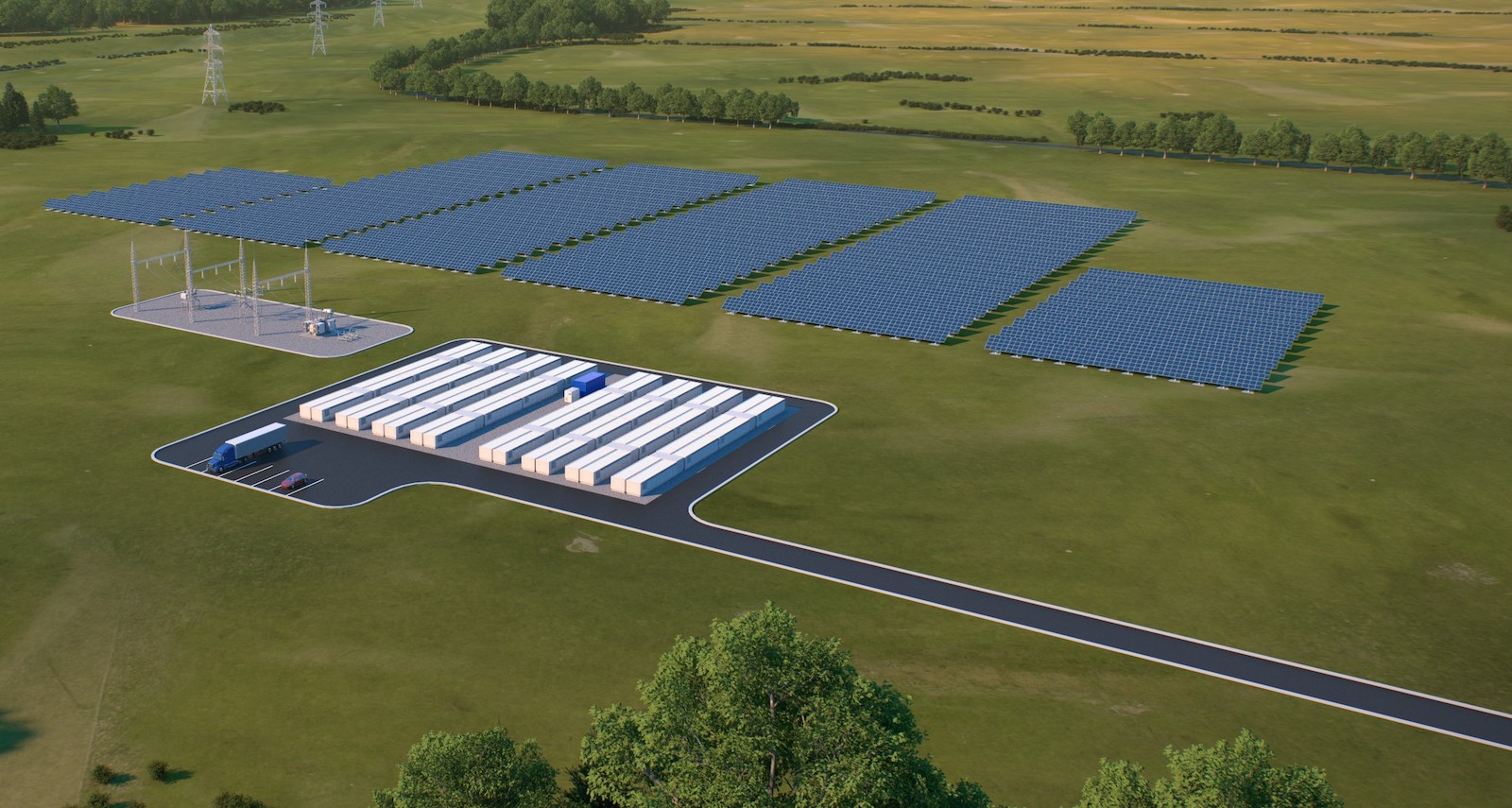
Sign up for daily news updates from CleanTechnica on email. Or follow us on Google News!
Oh the irony, it burns. On the one hand, public officials in the iconic coal-producing state of West Virginia love to rant against renewable energy investing, while the other hand has loaded up a $290 million incentive package to reel in the Massachusetts-based US energy storage startup Form Energy. The company is setting up its first factory in West Virginia, to mass produce new long duration iron-air batteries that will help kick coal out of the power generation picture all around the US.
Form Energy Launches Long Duration Iron-Air Battery
Form Energy crossed the CleanTechnica radar back in 2021, when the company introduced its new long duration energy storage solution to the world.
Long duration is the key word. The US Department of Energy has been on the prowl for new, long duration energy storage technology that can deliver at least 10 hours of electricity, on up to full days and more. Utilities commonly use lithium-ion battery arrays to handle daily grid management tasks, but they only last for a few hours. A grid saturated with wind and solar energy needs more hours of storage to ensure reliability and stability.
Form claims a duration of 100 hours for its new iron-air battery, blowing long past the Energy Department’s 10-hour floor. The technology is based on “reversible rusting,” a 1970’s idea that has finally seen its day.
Iron-air batteries literally work by exposing iron to a stream of air. With an assist from an electrolyte and a membrane, the result is an electrical current and a pile of rust. Charging up the battery is simply a matter of applying an electrical current, reformulating the rust back into iron.
That’s not quite as simple as it may sound. After all, the foundational technology has been around for about 40 years before pathways to commercialization have emerged.
Form Energy is banking on a scalable approach based on modules the size of a garage freezer, lengthwise. Each module is packed with about 50 cells, each of which contains the iron and air electrodes along with a non-flammable electrolyte, similar to those used in AA batteries.
That’s just for starters. “These battery modules are grouped together in environmentally protected enclosures,” Form explains. “Hundreds of these enclosures are grouped together in modular megawatt-scale power blocks.”
“Depending on the system size, tens to hundreds of these power blocks will be connected to the electricity grid. For scale, in its least dense configuration, a one megawatt system comprises half an acre of land. Higher density configurations would achieve >3 MW/acre,” they add.
Coal State To Export Coal-Killing Energy Storage Technology
That’s a lot of cells and a lot of power blocks, and Form was meticulous about choosing a suitable site to manufacture them.
Last year West Virginia got the winning ticket out of a pool of 500 potential sites. The attraction consisted partly of availability of a suitable brownfield, the abandoned Weirton Steel plant on the Ohio River. Access to river, rail, and highway transportation corridors was another factor, and the offering of a state incentive package worth up to $290 million sealed the deal.
Form did not let the grass grow under their feet. Work on the new factory started in May. By September construction was proceeding ahead of schedule, earning a ceremonial visit from US Secretary of Energy Jennifer Granholm and leading state officials.
West Virginia Economic Development Secretary Mitch Carmichael was particularly effusive. “It’s amazing when you see the transformation of that site just since Memorial Day,” he said, as reported by the State Journal on September 4.
“That is a project I could not be more proud of,” Carmichael continued. “It’s moving forward and they’ve already begun soliciting for jobs and positions at the facility. Steel is now rising out of the ground on the former site of the steel mill.”
Who’s Afraid Of The ESG?
Of course, no mention about a significant new clean energy investment in a coal producing state would be complete without a mention of a hard push by public officials in two dozen or so states — including West Virginia — to stop money managers from considering ESG (environment, social, governance) principles when investing state funds.
Though promoted as a form of fiscal responsibility with a big helping of culture-war rhetoric, the meat of the anti-ESG movement consists of policies that protect fossil fuel stakeholders.
West Virginia is a case in point. While Charmichal’s office was busy incentivizing a coal-killing investment of public resources aimed at bringing at least 750 new full time jobs to West Virginia, State Treasurer Riley Moore clapped back with a proposed bill aimed at barring West Virginia money managers from considering ESG factors when investing state funds.
“Wall Street fund managers and proxy advisory firms have used the façade of ESG to impose woke, leftist policies across the private sector,” Moore said in March, by way of thanking the state legislature for passing his bill.
In June, Moore also put his John Hancock on a multi-state letter taking aim at private sector money managers.
“Unfortunately, we believe the shareholding voting process that is the backbone of American capitalism has been corrupted by woke activists who are trying to use other people’s investments to push their own social or political agendas,” Moore said.
Long Duration Energy Storage Is Coming, ESG Or Not
Coincidentally or not, Moore is now running for a seat in the US House of Representatives, with the enthusiastic endorsement of the West Virginia Coal Association among others.
“Moore has crusaded against national and international financial interests who have adopted lending policies that discriminate against fossil energy extraction,” WVCA said in August.
In an interesting twist, WVCA also endorsed West Virginia Governor Jim Justice’s bid for US Senate, even though the Governor has been a staunch supporter of the new energy storage investment.
ESG or not, Justice did not seem concerned about the risk of a $290 million state incentive package going down the drain when he welcomed Form to West Virginia in December of 2022.
“We structured a unique financial incentive package worth up to $290 million in asset-based, performance financing to support their decision to locate in Weirton,” Justice said.
Other States Pile On To New Iron-Air Battery
Justice also did not seem concerned that the new long duration energy storage factory would enable other states to shepherd more renewable energy into their other grids.
At least three states are already lined up to receive their new iron-air batteries.
Georgia is one of them. In June, Form announced that it is moving forward to deploy a 15-megawatt, 1,500 megawatt-hour iron-air battery for the Georgia Power branch of Southern Company. Pending regulatory approval, the battery will begin operating in 2026.
In August, Form announced that it has received a $12 million grant from the New York State Energy Research and Development Authority to get its 10-megawatt, 1,000 megawatt-hour iron-air battery up and running by 2026, making it the only multiple-days energy storage system in the state.
Earlier this month, the California Energy Commission also chimed in with a $30 million commitment to Form for a 5-megawatt, 500 megawatt-hour version of the iron-air battery, which will also be the first multi-day energy storage project when it goes online around the end of 2025.
Hold on to your hats. Iron-air technology is not the only energy storage card Form has up its sleeve. Form also has a sulfur-based flow battery in the works, with a funding assist from the Energy Department’s ARPA-E office for high risk, high reward projects.
Follow me @tinamcasey on Bluesky, Threads, Post, and LinkedIn.
Image (cropped): Iron-air battery to provide long duration energy storage, courtesy of Form Energy via CEC.
Have a tip for CleanTechnica? Want to advertise? Want to suggest a guest for our CleanTech Talk podcast? Contact us here.
Our Latest EVObsession Video
[embedded content]
I don’t like paywalls. You don’t like paywalls. Who likes paywalls? Here at CleanTechnica, we implemented a limited paywall for a while, but it always felt wrong — and it was always tough to decide what we should put behind there. In theory, your most exclusive and best content goes behind a paywall. But then fewer people read it!! So, we’ve decided to completely nix paywalls here at CleanTechnica. But…
Thank you!
Advertisement
CleanTechnica uses affiliate links. See our policy here.
- SEO Powered Content & PR Distribution. Get Amplified Today.
- PlatoData.Network Vertical Generative Ai. Empower Yourself. Access Here.
- PlatoAiStream. Web3 Intelligence. Knowledge Amplified. Access Here.
- PlatoESG. Carbon, CleanTech, Energy, Environment, Solar, Waste Management. Access Here.
- PlatoHealth. Biotech and Clinical Trials Intelligence. Access Here.
- Source: https://cleantechnica.com/2023/12/24/coal-state-exports-iron-air-energy-storage/
- :has
- :is
- :not
- $UP
- 000
- 1
- 10
- 100
- 15%
- 2021
- 2022
- 2025
- 2026
- 36
- 40
- 50
- 500
- 750
- a
- About
- access
- Achieve
- acre
- across
- activists
- add
- adopted
- Advertise
- advisory
- Affiliate
- afraid
- After
- against
- ahead
- aim
- aimed
- AIR
- All
- along
- already
- also
- always
- amazing
- American
- among
- an
- and
- announced
- Another
- Applying
- approach
- approval
- ARE
- around
- AS
- assist
- At
- attraction
- AUGUST
- authority
- availability
- back
- Backbone
- Banking
- based
- batteries
- battery
- BE
- been
- before
- begin
- begun
- behind
- believe
- BEST
- bid
- Big
- Bill
- Bit
- Blocks
- Blowing
- bluesky
- Branch
- Bringing
- burns
- busy
- but
- by
- CA
- CAN
- capitalism
- card
- case
- Cells
- charging
- chip
- choosing
- claims
- clean
- clean energy
- cleantech
- Cleantech Talk
- Coal
- coming
- commercialization
- commitment
- commonly
- Companies
- company
- complete
- completely
- comprises
- concerned
- Configuration
- configurations
- connected
- considering
- consists
- construction
- contains
- content
- continued
- corrupted
- could
- course
- Crossed
- Current
- daily
- day
- Days
- deal
- December
- decide
- decided
- decision
- deliver
- dense
- density
- Department
- Department of Energy
- deploy
- Development
- DID
- don
- down
- dozen
- drain
- duration
- each
- Earning
- Economic
- Economic Development
- electricity
- electrolyte
- embedded
- emerged
- enable
- end
- Endorsement..
- energy
- ensure
- enthusiastic
- Environment
- environmentally
- ESG
- Even
- Exclusive
- Explains
- export
- exports
- extraction
- façade
- Facility
- factor
- factors
- factory
- Feet
- felt
- few
- fewer
- Finally
- financial
- financing
- firms
- First
- Fiscal
- Floor
- flow
- For
- form
- Former
- Forward
- fossil
- Fossil fuel
- foundational
- from
- Fuel
- full
- fund
- fund managers
- funding
- funds
- garage
- generation
- Georgia
- get
- Goes
- going
- got
- governance
- Governor
- grant
- grass
- Grid
- Ground
- Grow
- Guest
- Half
- hand
- handle
- Hard
- Have
- he
- help
- helping
- here
- High
- higher
- Highway
- his
- HOURS
- House
- house of representatives
- HTML
- HTTPS
- Hundreds
- i
- iconic
- idea
- if
- implemented
- impose
- in
- Incentive
- incentivizing
- Including
- interesting
- interests
- International
- into
- introduced
- investing
- investment
- Investments
- irony
- IT
- ITS
- Jennifer
- Jim
- Jobs
- John
- jpg
- june
- just
- Justice
- Key
- kick
- Land
- Last
- latest
- launches
- leading
- least
- Legislature
- lending
- let
- letter
- like
- likes
- Limited
- lined
- links
- Long
- Lot
- love
- Making
- management
- Managers
- March
- Mass
- Matter
- May..
- me
- Meat
- Media
- Memorial
- mention
- meticulous
- million
- modular
- module
- Modules
- money
- Month
- more
- most
- movement
- moving
- multi-state
- National
- Need
- needs
- New
- New York
- New York state
- news
- no
- now
- of
- offering
- Office
- officials
- Ohio
- on
- ONE
- online
- only
- operating
- or
- Other
- Others
- our
- out
- own
- package
- packed
- particularly
- Passing
- past
- pathways
- pending
- People
- people’s
- performance
- picture
- plant
- plato
- Plato Data Intelligence
- PlatoData
- player
- podcast
- Point
- policies
- policy
- political
- pool
- positions
- Post
- potential
- power
- private
- private sector
- process
- produce
- producing
- project
- projects
- Promoted
- proposed
- protect
- protected
- proud
- provide
- proxy
- public
- publish
- Push
- put
- quite
- radar
- Rail
- Read
- Reader
- receive
- received
- regulatory
- regulatory approval
- reliability
- Renewable
- renewable energy
- Reported
- Representatives
- research
- research and development
- Resources
- responsibility
- result
- Reward
- rising
- Risk
- River
- running
- Rust
- Said
- scalable
- Scale
- schedule
- secretary
- sector
- see
- seem
- seen
- Senate
- September
- setting
- should
- significant
- similar
- Simple
- simply
- since
- site
- Sites
- Size
- So
- Social
- solar
- solar energy
- Sound
- Southern
- Stability
- started
- starters
- startup
- State
- States
- steel
- Stop
- storage
- Stories
- stream
- street
- structured
- suggest
- suitable
- support
- supporter
- system
- T
- taking
- Talk
- tasks
- team
- Technology
- tens
- that
- The
- The State
- the world
- their
- Them
- then
- theory
- There.
- These
- they
- this
- those
- though?
- three
- ticket
- time
- tip
- to
- together
- tough
- Transformation
- transportation
- Treasurer
- trying
- twist
- two
- under
- unique
- Updates
- us
- US House
- US House of Representatives
- US Senate
- use
- used
- uses
- utilities
- Ve
- version
- via
- Video
- virginia
- Visit
- Voting
- want
- was
- Way..
- we
- welcomed
- West
- West Virginia
- What
- when
- which
- while
- WHO
- will
- wind
- winning
- with
- without
- Word
- Work
- works
- world
- worth
- would
- write
- Wrong
- year
- years
- york
- you
- Your
- youtube
- zephyrnet






